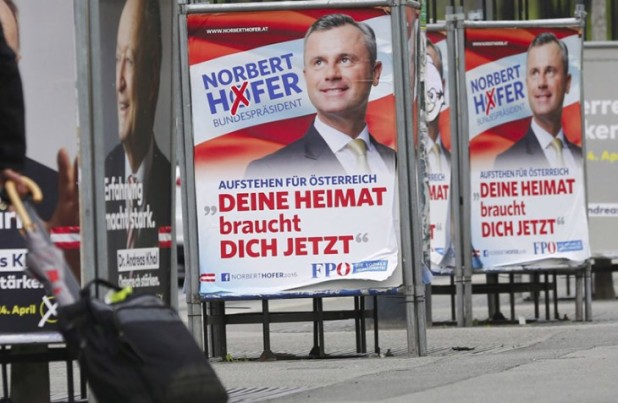The New Observer
April 21, 2016
There were more nonwhite invader “asylum” applications than births in Austria last year, that country’s president has announced.
In a speech Wednesday to the Council of Europe, President Heinz Fischer said there had been 88,000 “asylum” applications last year, while the number of live births was approximately 82,000.
Fischer—whose term of office ends this coming Sunday—did not point out that a large percentage of the 82,000 births will also have been from the already resident nonwhite invader population, particularly in Vienna, where there are now so many nonwhite preschool children that they have a number of Muslim-only kindergartens.
For example, of the 81,722 births recorded in Austria in 2014, some 15,240 were to those of “non-Austrian citizenship”—18 percent. This figure has likely climbed in the intervening period to closer to 20 percent, a figure which is confirmed by studying the official list of first names given to children in Austria, as put out by the government’s Department of Statistics.
Austria elects a new president on April 24, 2016. The president plays a largely ceremonial role from offices in the imperial Hofburg palace. But he is head of state, swears in the chancellor, has the authority to dismiss the cabinet, and is commander in chief of the military.
Members of the far left Social Democrats and the conservative People’s Party have always been elected to the post since it was first put to a popular vote in 1951.
However, all polls for this coming Sunday’s election have the anti-invasion Freedom Party of Austria (FPÖ) and the Green Party almost tied for the top spot. If no candidate wins an outright majority, it will go to a second vote.
Norbert Hofer is the FPÖ’s candidate, and his chances are regarded as extremely good, given the fact that all polls show his party is now the single most popular political organization in the country, regularly getting in excess of 34 percent of the vote.
As the Financial Times’s Jewish chief foreign affairs correspondent, Gideon Rachman, has already admitted, it is “hard to see how the Freedom party can be prevented from entering a coalition government at national level after Austria’s next parliamentary elections, due by September 2018. Such a breakthrough would make it Europe’s most successful rightwing populist party.”
The FT quoted Johann Gudenus, FPÖ deputy mayor of Vienna, as saying that “All our warnings about the refugee crisis came true. Voters have realized we were right.”
Rachman goes on to add:
When I lived in Vienna in 1983, the Freedom party was in government, as a junior coalition partner to the Social Democrats. However, the Freedom party in those days was a liberal, centrist party, although with some nationalist overtones. It turned sharply to the right after Jörg Haider, a rightwing extremist who found good things to say about Adolf Hitler’s employment policies, seized control of the party in 1986.
The Freedom party had a spell in power from 2000 to 2006, in a coalition government with the People’s party. This caused the rest of the EU to impose political sanctions on Austria—an episode that deeply offended even moderate Austrians, who resented being pushed around by foreigners.
Should the Freedom party come to power in 2018, one has to wonder if the EU would attempt to repeat that kind of punishment. Europe’s political climate is much more fraught nowadays. Increasingly, it looks as if Austria is going to be a test case for Europe.
 Daily Stormer The Most Censored Publication in History
Daily Stormer The Most Censored Publication in History




